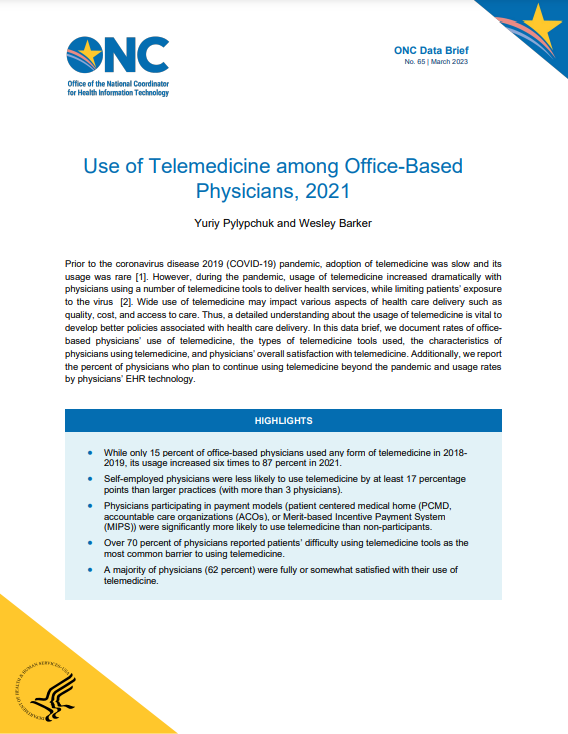Prior to the coronavirus disease 2019 (COVID-19) pandemic, adoption of telemedicine was slow and its usage was rare [1]. However, during the pandemic, usage of telemedicine increased dramatically with physicians using a number of telemedicine tools to deliver health services, while limiting patients’ exposure to the virus [2]. Wide use of telemedicine may impact various aspects of health care delivery such as quality, cost, and access to care. Thus, a detailed understanding about the usage of telemedicine is vital to develop better policies associated with health care delivery. In this data brief, we document rates of office-based physicians’ use of telemedicine, the types of telemedicine tools used, the characteristics of physicians using telemedicine, and physicians’ overall satisfaction with telemedicine. Additionally, we report the percent of physicians who plan to continue using telemedicine beyond the pandemic and usage rates by physicians’ EHR technology.
HIGHLIGHTS
- While only 15 percent of office-based physicians used any form of telemedicine in 2018-2019, its usage increased six times to 87 percent in 2021.
- Self-employed physicians were less likely to use telemedicine by at least 17 percentage points than larger practices (with more than 3 physicians).
- Physicians participating in payment models (patient centered medical home (PCMD, accountable care organizations (ACOs), or Merit-based Incentive Payment System (MIPS)) were significantly more likely to use telemedicine than non-participants.
- Over 70 percent of physicians reported patients’ difficulty using telemedicine tools as the most common barrier to using telemedicine.
- A majority of physicians (62 percent) were fully or somewhat satisfied with their use of telemedicine.
Telemedicine use increased by six times from 2019 to 2021.
FINDINGS
★ Fifteen percent of physicians reported use of telemedicine in 2018 and 2019.
★ Nearly 90% of physicians reported use of telemedicine in 2021.
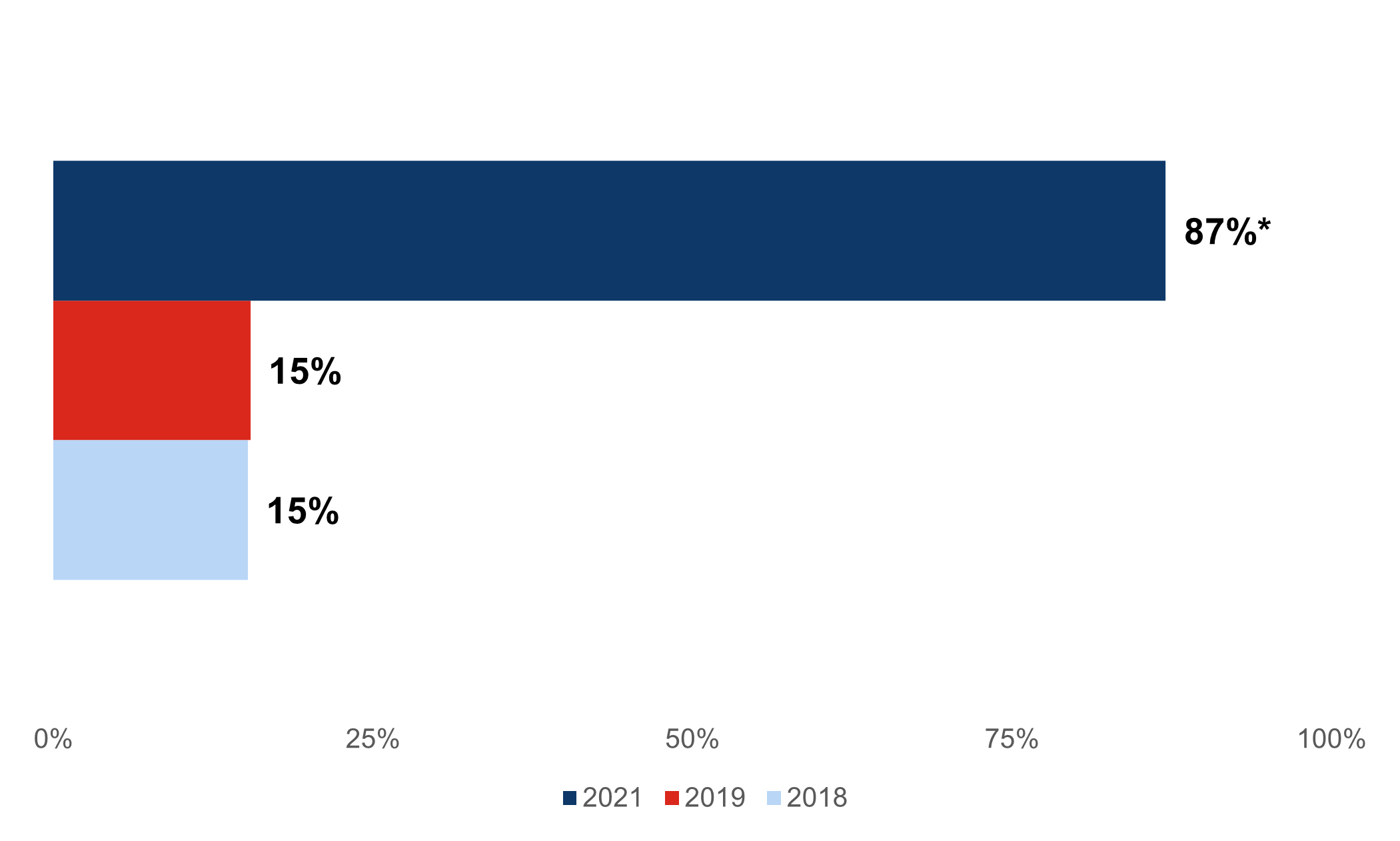
Figure 1: Percent of office-based physicians that used telemedicine, 2018-2021.
Source: National Electronic Health Record Survey, 2018-2021.
Notes: Survey respondents are physicians who practice in office-based settings. See Definitions and a description of the data source and methods for more information. Significantly different from 2019, * p<0.05.
More than 80% of physicians used telemedicine for less than 50% percent of their patients.
FINDINGS
★ Majority of physicians (53%) used telemedicine for less than 25% of their patient visits.
★ Less than 20% of physicians used telemedicine for 50% or more of their patient visits.
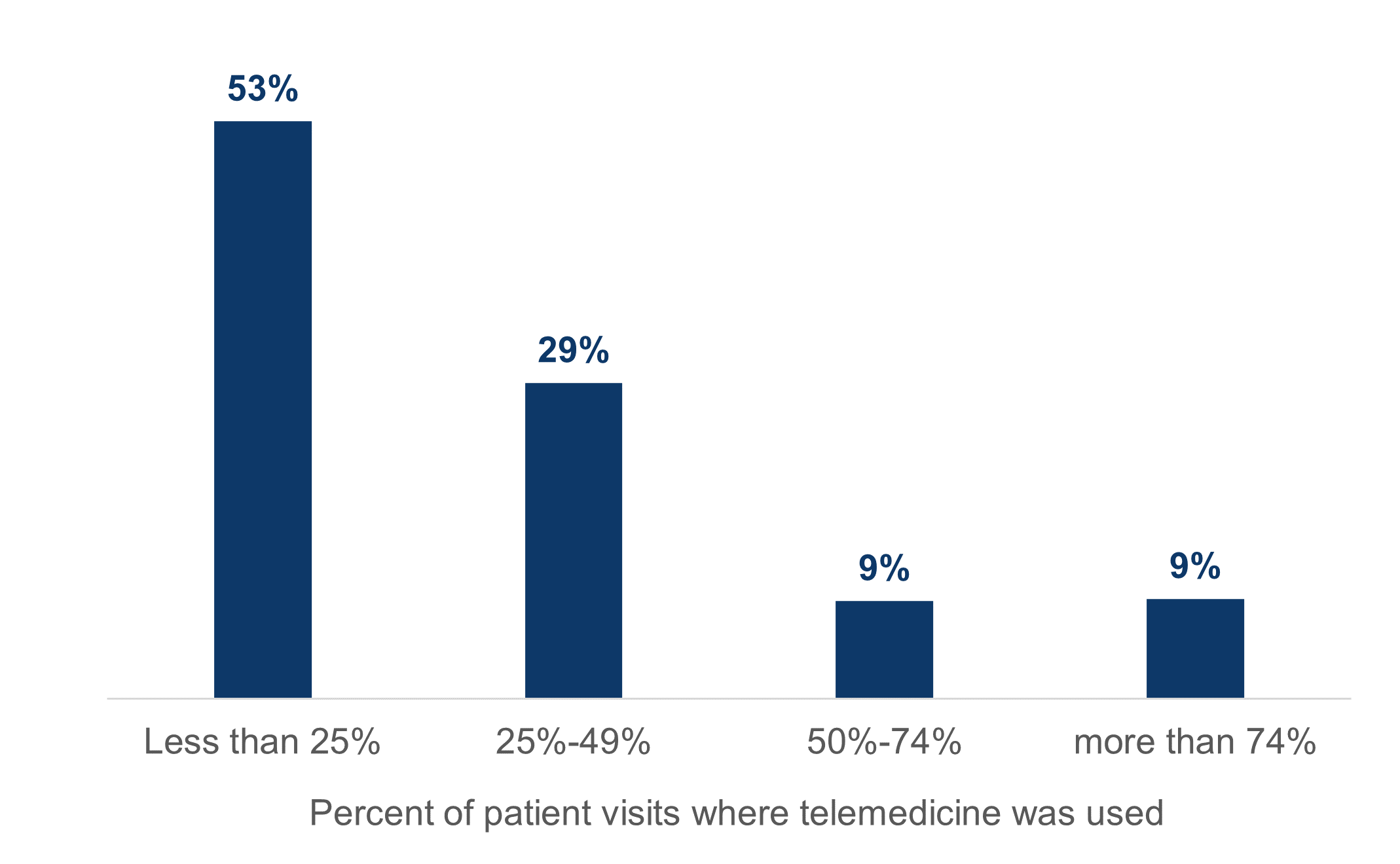
Figure 2: Percentage of physicians who used telemedicine by patient visit volume, 2021.
Source: National Electronic Health Record Survey.
Notes: Estimates are calculated on the sample of office-based physicians who used telemedicine.
Solo practice physicians were less likely to use telemedicine by at least 17 percentage points than larger practices (4 or more physicians).
FINDINGS
★ The telephone is the most commonly used tool for telemedicine visits (58%) while the use of a telemedicine platform integrated with the EHR is the least commonly used tool (25%).
★ Nearly all physicians practicing in community health centers or medical/academic health centers reported use of any telemedicine tools in 2021.
Any | Telephone | Video Conference | Platform not Integrated with EHR | Platform Integrated with EHR | |
|---|---|---|---|---|---|
National | 87 | 58 | 49 | 39 | 25 |
Specialty | |||||
Primary (reference) | 91 | 63 | 50 | 43 | 29 |
Surgical | 75* | 48* | 40* | 40* | 18* |
Medical | 87 | 57 | 52 | 52 | 23 |
Ownership | |||||
Physician or physician group (reference) | 80 | 50 | 42 | 39 | 17 |
Insurance/HMOs | 95* | 68* | 57* | 34 | 37* |
Community health centers | 97* | 88* | 66* | 54 | 46* |
Medical/academic health centers | 98* | 70* | 61* | 38 | 36* |
Practice size | |||||
1 physician(reference) | 76 | 50 | 43 | 28 | 15 |
2-3 physicians | 78 | 55 | 42 | 36 | 16 |
4-10 physicians | 93* | 58 | 49 | 46* | 30* |
11-50 physicians | 96* | 72* | 57* | 47* | 36* |
More than 50 physicians | 98* | 65* | 63* | 41* | 38* |
Urbanicity | |||||
Urban (reference) | 87 | 58 | 49 | 39 | 25 |
Rural | 83 | 59 | 51 | 36 | 22 |
Table 1: Percent of physicians who used telemedicine tools by their characteristics, 2021.
Source: National Electronic Health Record Survey.
Notes: See Definitions for explanations of the telemedicine tools. Significantly different from corresponding reference group, * p<0.05.
Physicians participating in payment models (patient centered medical home, ACOs, or MIPS) were significantly more likely to use telemedicine than non-participants.
FINDINGS
★ Physicians participating in a patient-centered medical home or accountable care organization used telemedicine at the highest rates.
★ Physicians participating in a patient-centered medical home or accountable care organization were more likely to use a telemedicine tool fully integrated with their EHR.
★ Usage of telemedicine platform fully integrated with EHR were the least commonly used tool across all payment models (37% or less).
Model | Any | Telephone | Video Conference | Platform not Integrated with EHR | Platform Integrated with EHR | |
|---|---|---|---|---|---|---|
National | 87 | 58 | 49 | 39 | 25 | |
Patient Centered Medical Home | Yes | 96* | 71* | 49 | 49* | 37* |
No | 84 | 55 | 49 | 36 | 22 | |
ACO arrangement with public or private insurers | Yes | 94* | 68* | 52 | 49* | 32* |
No | 84 | 55 | 48 | 35 | 22 | |
Pay-for-Performance arrangement | Yes | 91 | 68* | 54 | 49* | 31 |
No | 86 | 56 | 48 | 37 | 24 | |
Merit-Based Incentive Payment System | Yes | 92* | 60 | 50 | 45 | 29 |
No | 85 | 57 | 49 | 37 | 24 |
Table 2: Percent of physicians who used telemedicine tools by their participation in payment models, 2021.
Source: National Electronic Health Record Survey.
Notes: Significantly different from non-participants within a corresponding payment model, * p<0.05.
Patients’ difficulty using telemedicine tools was the most common reported barrier affecting physicians’ use of telemedicine.
FINDINGS
★ The most common barriers for telemedicine use experienced by physicians involved patients’ difficulties using and accessing telemedicine technology.
★ Over 1 in 3 physicians reported internet access and speed issues as an issue affecting their use of telemedicine.
★ Less than 1 in 4 physicians reported temelemedicine is not appropriate for their practice (26%) and telemedicine platform is not easy to use (18%).
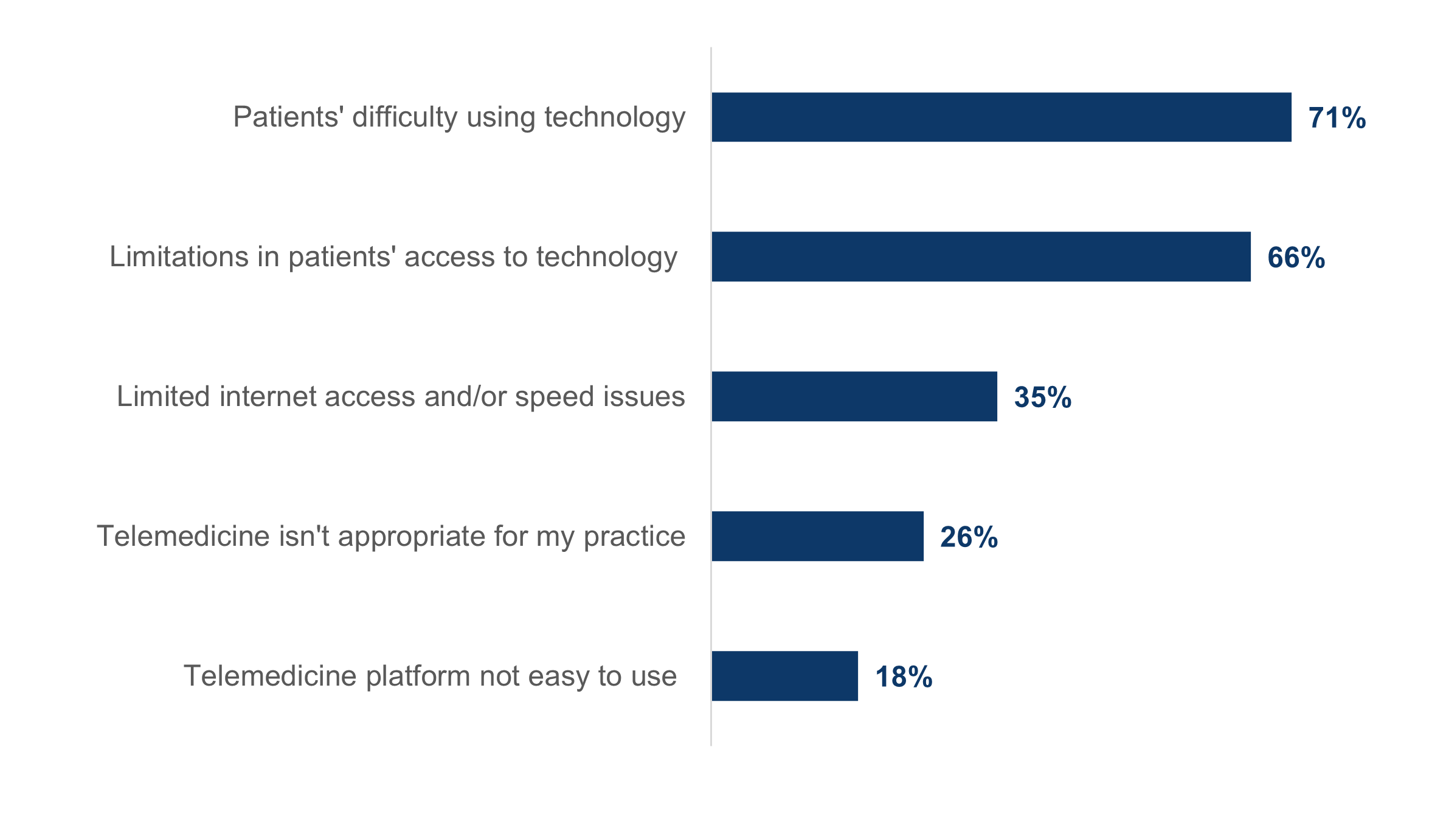
Figure 3: Issues affecting physicians use of telemedicine, 2021.
Source: National Electronic Health Record Survey.
Notes: Estimates are calculated on the sample of office-based physicians who used telemedicine.
Over 90 percent of physicians who used a telemedicine platform reported having the ability to provide similar quality of care during telemedicine visits as during in-person visits.
FINDINGS
★ Not having any telemedicine platform was associated with a low satisfaction rate of using telemedicine (under 40%) and low ability to provide similar quality of care to in-person visits (under 50%).
★ Physicians with telemedicine platforms both integrated and not integrated with their EHRs were more satisfied with using telemedicine than those without any platform or only one platform type.
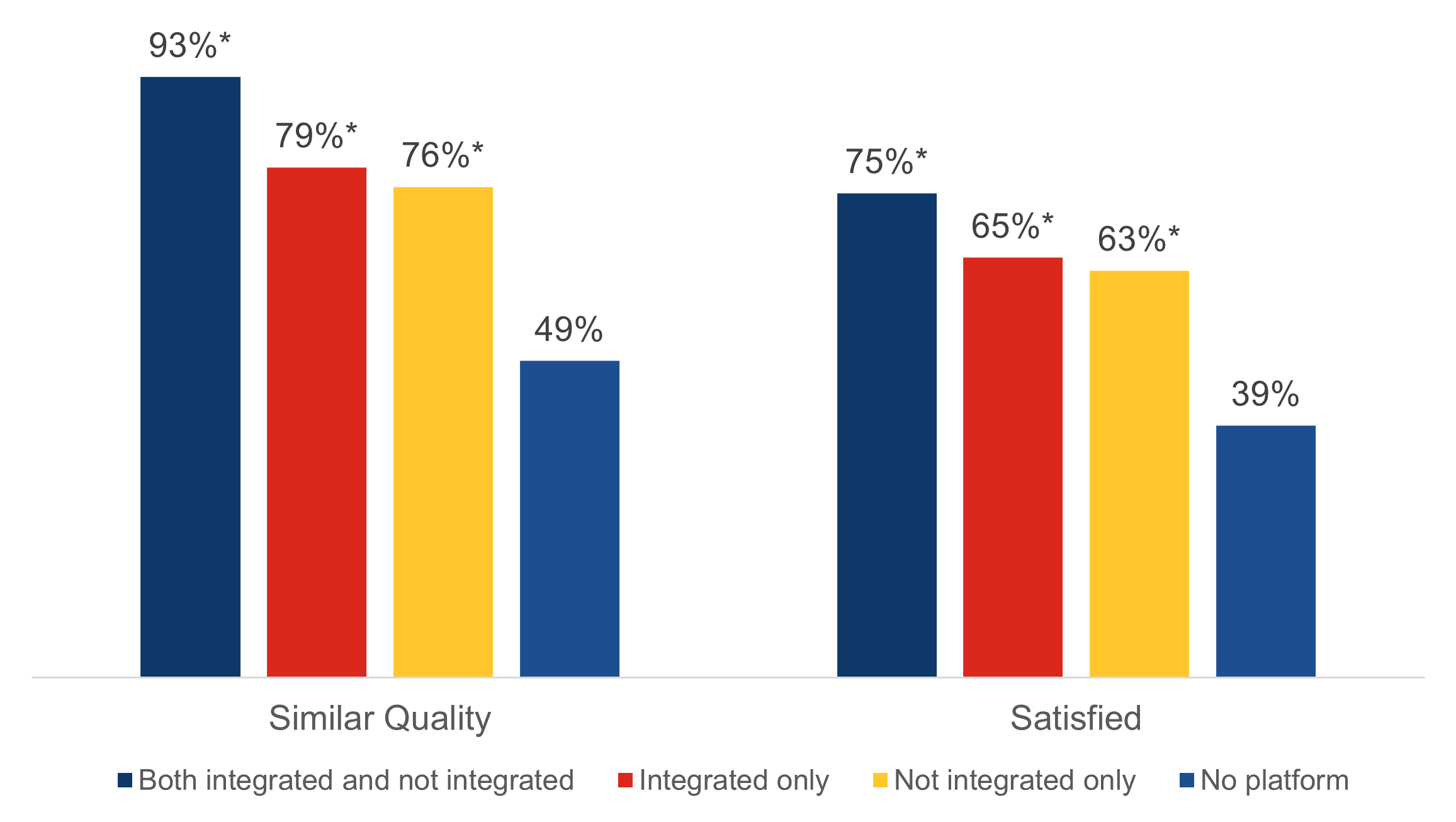
Figure 4: Percent of physicians satisfied with telemedicine and believe telemedicine provides similar quality of care to an in-person visit by having telemedicine platforms integrated and not integrated with their EHRs, 2021.
Source: National Electronic Health Record Survey.
Notes: Estimates are calculated on the sample of office-based physicians who use telemedicine. Similar quality is defined as physicians who indicated that use of telemedicine provides similar quality of care to an in-person visit ‘Fully’, ‘To a great extent’, or ‘To some extent’. Satisfied is defined as physicians who indicated they are ‘Very satisfied’ or ‘Somewhat Satisfied’ with the use of telemedicine. ‘No platform’ is defined as physicians who used telemedicine tools other than telemedicine platforms integrated or not integrated with their EHR. *Significantly different from “No Platform” within each category, * p<0.05.
Nationally, about 80% of physicians plan to use telemedicine after the coronavirus disease pandemic is over.
FINDINGS
★ Physicians who are satisfied with their usage of telemedicine plan to use telemedicine after the coronavirus disease pandemic is over by 36 percentage points more than those who are dissatisfied with telemedicine.
★ Physicians who perceived that telemedicine provides similar quality of care to in-person visits were more likely to plan to use telemedicine after the coronavirus disease pandemic is over.
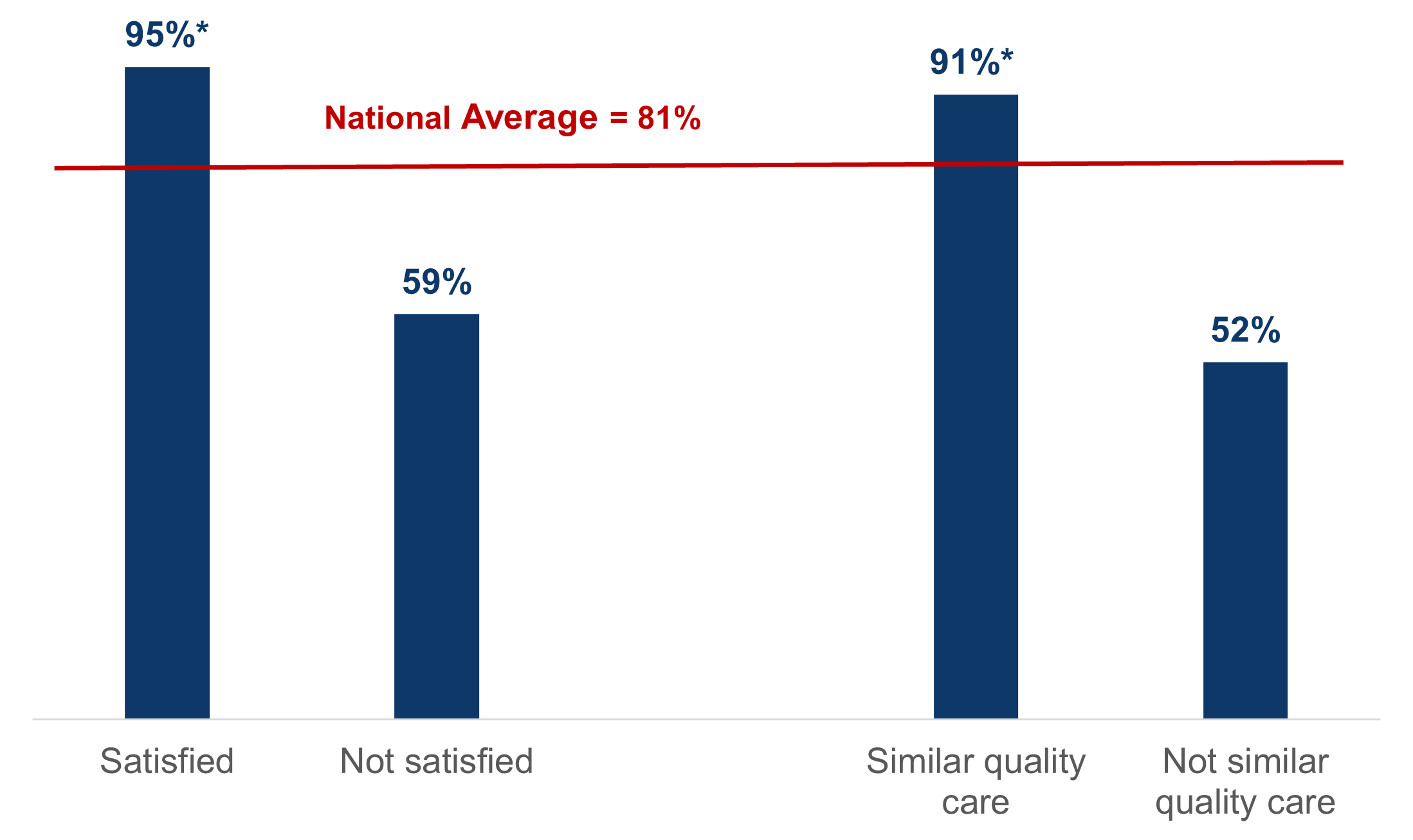
Figure 5: Percent of physicians who plan to use telemedicine after the coronavirus disease pandemic is over by their satisfaction with telemedicine and perceived quality of telemedicine compared to in-person visits, 2021.
Source: National Electronic Health Record Survey.
Notes: Estimates are calculated on the sample of office-based physicians who use telemedicine. Physicians were flagged as “Satisfied” if they indicated being very or somewhat satisfied with telemedicine. Physicians were flagged as “similar quality care” if they indicated they were able to provide similar quality of care during a telemedicine visit to full, a great, or some extent, compared to an in-person visit. *Significantly different from a corresponding “No” category, * p<0.05.
Telemedicine platform integration varied across reported EHR developer.
FINDINGS
★ Nearly half (48%) of physicians with an Epic EHR reported use of a telemedicine platform integrated with their EHR - the highest percentage among respondents.
★ Nearly all physicians who reported use of a Cerner, eClinicalWorks, or Epic EHR reported use of some type of telemedicine tool.
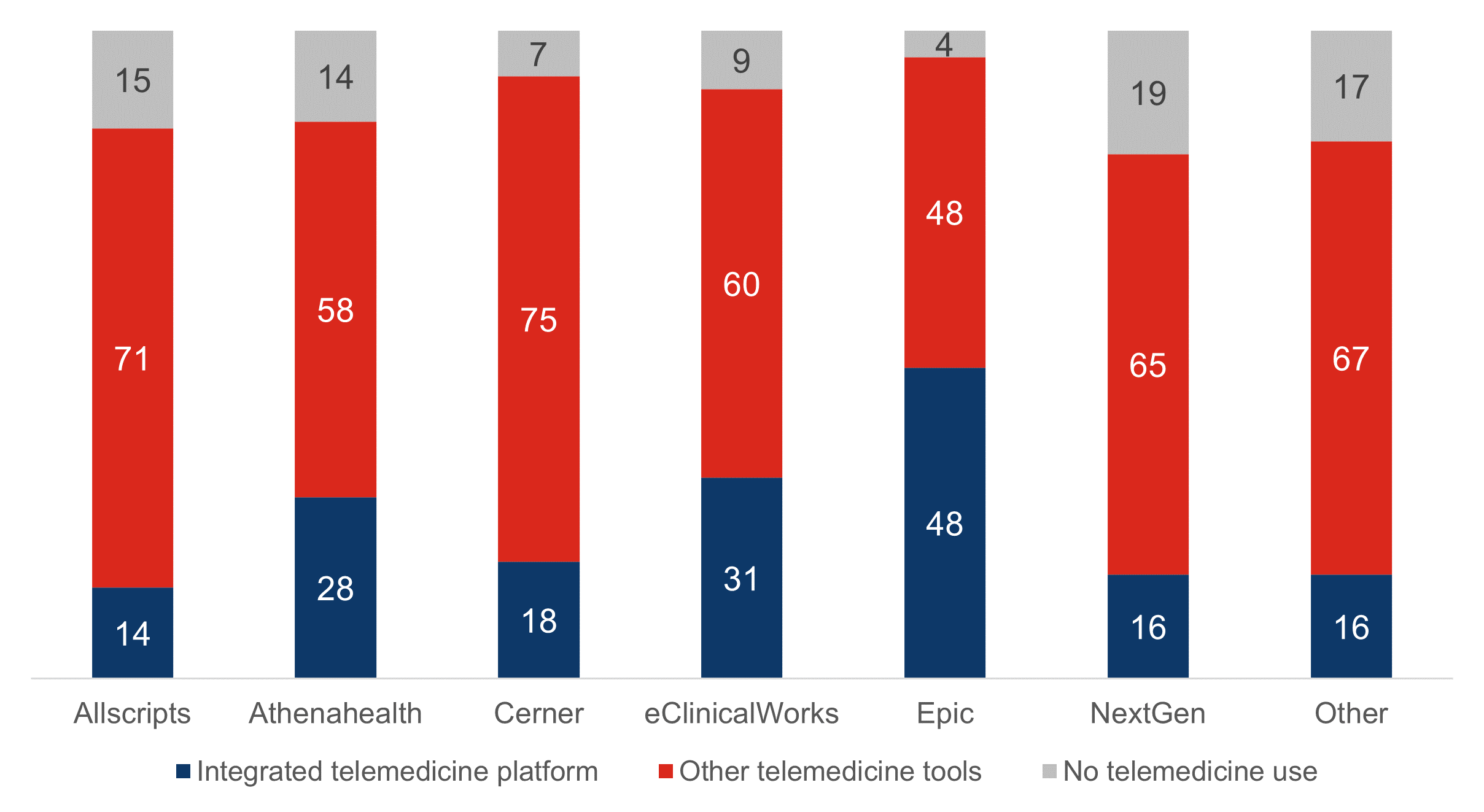
Figure 6: Percent of physicians using a telemedicine platform integrated with their EHR and other telemedicine tools by their reported EHR developer, 2021.
Source: National Electronic Health Record Survey.
Notes: EHR developer represents the technology developer reported by the physician respondent at the time of the survey.
SUMMARY
The use of telemedicine among office-based physicians increased more than five times between 2019-2021. This swift rise was observed in other care settings, as well, including among mental health and substance use facilities and providers [3]. Undeniably, the spread of COVID-19 impelled patients and providers to use telemedicine as a mechanism of providing and receiving health services. In this data brief we provide important information that enhances our understanding about the current state of telemedicine among office-based physicians and furthers our knowledge about the barriers and challenges associated with its usage.
The data show that telemedicine became a more common form of care, but in-person visits remained the dominant type of care delivery for most physicians. We found that the vast majority of physicians (87%) used telemedicine in 2021, but, for most physicians, in-person visits remained the dominant form of care delivery. Over half of physicians provided care via telemedicine for fewer than 25% of patient visits, and less than 20% of physicians used telemedicine for more than 50% of patient visits.
We also found a large variation in telemedicine use and the type of telemedicine tools used across physician characteristics. Primary care physicians were more likely to use telemedicine than surgical specialists. Larger practice groups were also more likely to use telemedicine than smaller practices (under 4 physicians) and physicians employed by medical centers and HMOs had higher rates of usage than those employed by physician groups. Furthermore, participants in payment models, such as Accountable Care Organizations and Patient Centered Medical Homes, had higher rates of telemedicine use than non-participants. Similar differences are observed for physicians who used different telemedicine tools, like the telephone, videoconference, and telemedicine platforms integrated and not integrated with their EHR.
Market research shows a breadth of tools in use by health care providers today – some primarily for videoconference or telephone, like Zoom or Cisco Systems, and others that are designed primarily as telemedicine platforms, like American Well, Doxy.me, and Teladoc [4]. Physicians in practice groups of four or more physicians were twice as likely to use a telemedicine platform integrated with their EHR than physicians in smaller practices. This variation highlights differences in the need and demand for telemedicine technology across physician settings and scopes of practice. Physicians of all types also reported several barriers that limited their use of telemedicine.
Physicians indicated a number of barriers that limited their use of telemedicine. Among all physicians, more than 2 in 3 reported patient difficulties using and accessing telemedicine technology – the most common barriers, by far. Physicians’ limited internet access and internet speed issues, appropriateness of telemedicine for practice, and ease of using telemedicine were other barriers but they were relatively less common, reported by less than 35% of physicians. The abrupt shift to virtual encounters precipitated by the pandemic may have caught some physicians unprepared or ill equipped to use telemedicine technology, but patient difficulties appear to be the primary barrier for physician use of telemedicine. The relatively low percentage of physicians reporting barriers associated with the appropriateness of telemedicine and the ease of using the telemedicine technologies may signal physician comfort with telemedicine, overall.
We found a significant and positive association between usage of certain telemedicine tools and satisfaction with telemedicine. Physicians who adopted telemedicine platforms (not telephone or videoconference tools alone) had higher rates of satisfaction with telemedicine than physicians who did not use a telemedicine platform. Among physicians who used telemedicine platforms that were both integrated and not integrated with their EHR, 93% reported that telemedicine provided similar quality of care to in-person visits than physicians who used only one type of platform (76%-79%) or used no telemedicine platform (telephone or videoconference tools alone) (49%). Physicians who were satisfied with using telemedicine or thought it delivered a similar quality of care to an in-person visit were more likely to plan to use telemedicine after the pandemic is over. Other data show that private investment in telemedicine technology and in new telemedicine companies continues to grow as the pandemic ends and the public health emergency wanes, signally that telemedicine may continue to be a key part of care delivery in the years to come [5].
As the use of telemedicine grows and its importance remains critical for care delivery, there is a need to continue to monitor its use and address barriers towards its use. There is also a need for identifying the type of telemedicine tools prevalent across health care settings and their associated satisfaction and impact on the quality of care. We find that more physicians used basic forms of telemedicine tools, like telephone calls and videoconference, to communicate with patients than sophisticated telemedicine platforms, like Doxy.me and Teladoc, that integrate with physician EHRs and can automate clinical documentation and clinical decision support. However, telephone and videoconference tools were found to provide less similar quality of care to in-person visits compared to telemedicine platforms. These platforms had higher rates of satisfaction and provided more similar quality of care to in-person visits. The findings show that though telemedicine is becoming a more routine part of care, the types of telemedicine tools used matter for physicians’ satisfaction and their perceived quality of care. However, barriers associated with patients’ internet and technology access may inhibit broader use of all these tools. Ensuring physicians have suitable telemedicine technology, and patients have and can use the requisite technology to communicate with their physician is important for appropriate care delivery.
DEFINITIONS
Office-based physician: non-federal physicians who practice in outpatient, office-based settings. These exclude radiologists, anesthesiologists, and pathologists.
Telemedicine: technology that enables virtual physician and patient interaction and communication through audio, audio with video, or web-based videoconference.
Telemedicine tools:
- Telephone: telephone audio only; normal phone call
- Videoconference: videoconference software with audio (e.g., Zoom, Webex, FaceTime)
- Platform not integrated with EHR: telemedicine platform (e.g., American Well, Doxy.me) not integrated with EHR
- Platform integrated with EHR: telemedicine platform (e.g., American Well, Doxy.me) integrated with EHR (e.g., capable of updating clinical documentation during telemedicine visit.).
DATA SOURCES AND METHODS
The primary data source for this brief is the National Electronic Health Record Survey (NEHRS). NEHRS is sponsored by the Office of the National Coordinator for Health Information Technology (ONC). NEHRS is conducted by the Division of Health Care Statistics (DHCS), National Center for Health Statistics (NCHS). This brief primarily reports results tabulated from the 2021 NEHRS and also includes results tabulated from the 2018 and 2019 surveys.
The purpose of NEHRS is to collect information on both office-based physicians’ adoption and use of electronic health record (EHR) systems, and progress towards meeting policy goals of the Health Information Technology for Economic and Clinical Health Act (HITECH Act).
The 2021 NEHRS reduced the questionnaire length from 8-pages to 4-pages and removed the computer assisted telephone interview data collection mode in an effort to improve response. The 2021 NEHRS collects some of the information that was collected in the 2019 NEHRS. However, it has new questions on the use of telemedicine technology and changes in terminology for some questions. Content common to the 2019 and 2021 NEHRS includes information on practice characteristics, prescribing practices for controlled substances, use of health information exchanges, and documentation associated with medical record systems and physician burden associated with the use of them.
More information about the survey can be found on the official NCHS website: [https://www.cdc.gov/nchs/nehrs/].
ACKNOWLEDGEMENTS
The authors are with the Office of Technology, within the Office of the National Coordinator for Health Information Technology. The data brief was drafted under the direction of Mera Choi, Director of the Technical Strategy and Analysis Division and Vaishali Patel, Deputy Director of the Technical Strategy and Analysis Division.
SUGGESTED CITATION
Pylypchuk Y. & Barker W. (March 2023). Use of Telemedicine among Office-Based Physicians, 2021. ONC Data Brief, no.65. Office of the National Coordinator for Health Information Technology: Washington DC.
REFERENCES
- Barnett, M.L., et al., Trends in Outpatient Telemedicine Utilization Among Rural Medicare Beneficiaries, 2010 to 2019. JAMA Health Forum, 2021. 2(10): p. e213282.
- Hincapie, M.A., et al., Implementation and Usefulness of Telemedicine During the COVID-19 Pandemic: A Scoping Review. J Prim Care Community Health, 2020. 11: p. 2150132720980612.
- Alvarado, H., Telemedicine Services in Substance Use and Mental Health Treatment Facilities, D.o.H.a.H. Services, Editor. 2021, Substance Abuse and Mental Health Services Administration.
- Healthcare, D. Top telehealth companies by market share. https://www.definitivehc.com/resources/healthcare-insights/top-telehealth-companies-market-share, 2022.
- Cbinsights. Funding to the telehealth space is at an all-time high — here’s what’s driving the boom. https://www.cbinsights.com/research/telehealth-tech-funding-trends/, 2022.
Appendix Table: Percent of physicians who used telemedicine tools by payment method, 2021.
Any | Telephone | Video Conference | Platform not Integrated with EHR | Platform Integrated with EHR | |
|---|---|---|---|---|---|
Medicare | |||||
Yes | 86 | 59 | 49 | 38 | 27* |
No (reference) | 88 | 52 | 49 | 43 | 13 |
Medicaid | |||||
Yes | 88* | 61* | 48 | 40 | 27* |
No (reference) | 81 | 46 | 51 | 35 | 16 |
Source: National Electronic Health Record Survey.
Notes: See Definitions for explanations of the telemedicine tools. Significantly different from corresponding reference group, * p<0.05.


